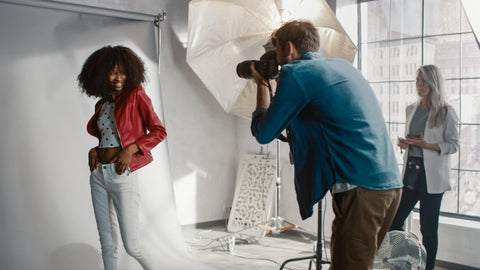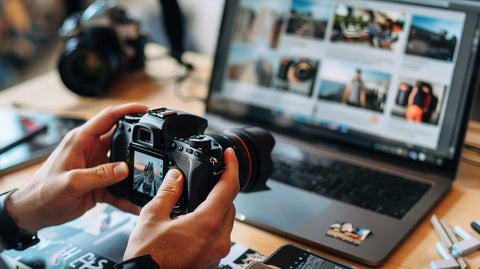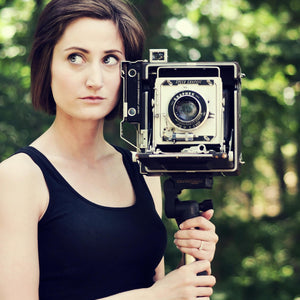- Lightroom Presets
- Mobile Presets
-
Photoshop
-
Learn
-
Support
-
Install
- Best Sellers
- Blog
By Anna Gay on | No Comments

In this tutorial, I will walk you through how to use the Falling Leaves Photoshop Actions and Overlays to make your Autumn photos really shine! I will go over the various types of actions - from placing leaves, to overall color adjustments - included in this set, and how you can get the most out of each of these actions.
The ultimate goal is to make the leaves that you add to your image look as natural as possible, and this set includes all types of actions that will help you achieve a natural, beautiful autumn look!
This tutorial assumes you have a basic working knowledge of Layers and Layer Masks in Photoshop. This tutorial is geared towards Photoshop CC & CS users.
Before working with the Falling Leaves actions, I always like to make my basic exposure, contrast, and any skin adjustments first. Then, I begin to work with the leaves. I start by using the Place Leaves Action:

When the Place Leaves action plays, it will pull up a search box, at which point you will want to navigate to the folder where you originally saved your leaf overlays:

For this example, I selected Group 5 leaf overlay located in the Bonus Leaves Folder.
You will then use the Move tool to place the leaf overlay where you want it to go in your image:

In this particular image, I am going to be removing leaves from the overlay I just placed in order to make the placement appear more natural. To do this I have added a Layer Mask to my Leaves layer. You can do this manually, as shown below, or you can just use the Add Layer Mask action which is also included in this set:

To remove individual leaves, set your Foreground color to black, select a soft, round brush, and then make sure you have clicked on the Layer Mask icon (the white rectangle as shown in the image above) in your Layers panel:

With your brush set to 100% Opacity and Flow, brush over the leaves that you want to remove from the image.
As you can see below, I have removed quite a few leaves. There is no formula for how many leaves you should or should not have in your image, but my method is to try to visualize how it actually looks when leaves are falling, and then try to replicate that in my photo.

You will notice that the way in which leaves fall can range from falling in large groups, single leaves, at different speeds, and at varying distances from the camera, so that is what I am trying to recreate here.
First, I am focusing on leaves that will appear to be falling right around the subject. You can use the Move/Rotate/Resize action to get the leaves to approximately the same size they would be in reality, in relation to the subject.
Since the leaves are supposed to appear as though they are falling, blurring the leaves will make them appear even more natural, and you can do so by using the three Blur actions included in the set. Here, I have selected Medium Blur:

You can also change the intensity of the blur using the slider:

After blurring my leaves, I decided to remove even more leaves from around the subject, again using the soft black brush on my Layer Mask. If you want to add leaves back in that you have removed, you can brush over them with a white brush on your Layer Mask to add them back in.
Remember: A black brush removes leaves, a white brush adds leaves back in:

In addition to the leaf group overlays, the set also includes many individual leaf overlays. I like to add in individual leaves after the group overlay in order to fill in smaller sections of the image. In the next image, you will see that I have used the same leaf three times by duplicating the original leaf layer. You can also move and/or resize the duplicated leaf in order to add variation.
Tip: You will also want to use varying amounts of blur in order to portray leaves that are falling faster than others. More blur = a faster fall! And, if you think about the laws of gravity and motion, the closer the leaf is to the ground, the faster it will be falling, and the blurrier it will be:

At this point, how you edit the leaves will depend on the image you are editing, and how prominent you would like the leaves to be. Here is my final image:

If you're interested in making your own Fall photos pop with color and added leaves, do not miss this awesome Fall Photoshop collection!
Do you have any questions or comments about our Falling Leaves Photoshop Tutorial? Just leave us a comment below - we would LOVE to hear from you! And PLEASE SHARE this post using the social sharing buttons (we really appreciate it)!




Anna Gay is a portrait photographer based in Athens, GA and the author of the dPS ebook The Art of Self-Portraiture. She also designs actions and textures for Photoshop. When she is not shooting or writing, she enjoys spending time with her husband, and their two cats, Elphie and Fat Cat.

Comments